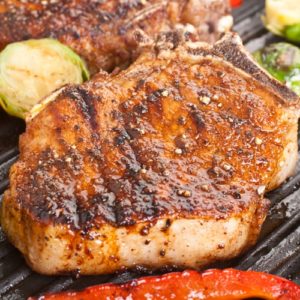You will learn much of what it takes to be a great cook during your time in culinary academy. Nonetheless, everyone makes mistakes, and you will likely be no exception. Here are five common cooking errors and tips on how to avoid them:
Using an unfamiliar oven
Ovens do not maintain a consistent temperature, and the number you choose may not accurately reflect what is occurring inside at any given moment. As Slate science writer Brian Palmer explained, an automatic thermostat regulates the oven’s warmth. The heat kicks on only when the thermostat detects it has dropped a preset number of degrees below your intended level. The temperature then rises significantly above what is indicated on the dial.
The room for error does not end there, as certain spots in the oven may be hotter than others. There are variations between the temperature settings of different models, and the behavior of a particular oven may change as it ages. For all these reasons, you should get to know an oven before you try to do any serious cooking or baking.
Thus, you should pay extra-close attention when you are new to a kitchen and still learning how the oven behaves. Even when you are performing multiple tasks in a busy kitchen, keep an eye on the oven thermometer. You can’t count on the temperature to remain at the level you set and may need to make adjustments.
Crowding the pan
You are frequently under a time crunch in the kitchen and eager to get all your delicious ingredients ready. Don’t let that tempt you into trying to cook too much in a single pan at once. Crowding your cooking surface results in lower heat and greater moisture. Your food is more likely to cook unevenly and will not get the perfect sear that ensures juiciness and flavor.
You can get away with piling on vegetables, as long as you give some thought to the order you add them in. However, if you are preparing multiple pieces of meat, as when cooking two steaks in a skillet, always consider whether you are allowing enough room between them.
The Kitchn advised switching to a larger pan, two smaller pans or cooking in batches if necessary. These options may seem less efficient when you are working with limited time or burners, but giving the food space to cook properly will pay off in the long run.
Not allowing sufficient resting time
When you have multiple dishes to complete and the head cook on the line is barking orders, it is tempting to rush a dish into service. Allowing proper resting time, however, is absolutely essential. Always give freshly cooked meat at least five minutes to rest before sending it out of the kitchen.
Cracked explained that meat continues to cook for a few minutes after being removed from heat. As it begins to cool, however, it reabsorbs some of the juices that were squeezed out during the cooking process. Cutting into the meat too soon results in those tasty juices spilling out, leaving the meat dry.
Not keeping your knives sharp
Knives are perhaps your most important tool, and you must care for them accordingly. Make sure you have every knife you may need in the course of the day at the ready and that they are all properly sharpened. Well-maintained knives will allow you to work more efficiently and precisely. On the other hand, if you let your knives get dull, you are more likely to slip and cut yourself.
Forgetting to taste
Cooking Light warned that not checking the taste of your latest culinary masterpiece can result in serious disappointment. Even the most competent chef cannot assume that every dish came out perfectly without pausing to test it. Variations in the type and quality of ingredients, oven temperature or subtleties in your cooking technique can all result in food coming out a little differently than you planned.
The only way to know for sure you are producing meals that you can take pride in is by always taking a moment for a taste test. Consider whether the dish has cooked long enough, if it needs additional seasoning and if the textures are appealing. This behavior becomes habit for most cooks, but you should never forget.


